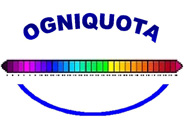|
babywipesus9
Starting Member
5 Posts
|
 Inviato il - 13/03/2021 : 09:15:54 Inviato il - 13/03/2021 : 09:15:54



|
1) High temperature anti-fog performance: at room temperature 25 #8451;, use the prepared
Wipe one side of the clean glass plate with an anti-fog wipe, and then place the glass plate on
Act on the water surface at a constant temperature of 60 #8451; for 3 minutes, and then let the glass surface dry
After that, repeat the above steps. According to 10% of the area of #8203;#8203;the glass plate
The number of repetitions before starting to fog is used to determine the anti-fogging time of the wet wipes. From the first
Starting from 2 times, each repetition is equivalent to 1 day of anti-fog effect [4].
2) Low-temperature anti-fog performance: use clean and dry glass on both sides
After wiping the prepared anti-fog wipes, put it in the refrigerator at 0 #8451;#65374;5 #8451;
in. Count the time from when it is put in to when the fogging phenomenon appears, and calculate the low temperature anti-fog
time.
3) Light transmittance: Use anti-fog wipes to coat one side of the slide
Anti-fogging agent, use a spectrophotometer to measure the glass slides and empty space coated with anti-fogging agent
The absorbance of the white glass slide [5].
4) Surface leveling: Use visual inspection to check the surface of clean glass
Wipe the surface with an anti-fog wipe, and then place the glass sheet vertically for 5 min
After that, observe the glass surface. Determined according to the following standards: A���Surface is flat
There are no traces, completely transparent; B --- there are slight traces on the surface
Traces, does not affect transparency; C�� spots and partial traces appear on the surface
Traces, slightly opaque; D��- There are a lot of traces on the surface, shadows
The light transmittance of ring glass.
Results and discussion
2.1 High temperature anti-fog performance
The addition of water-soluble silicone oil can improve the anti-fogging ability of the product, and
The addition of polymer carbomer or polyethylene glycol can greatly improve the product
Anti-fogging time, which is related to the film-forming properties of carbomer and polyethylene glycol
related. It can be seen from Figure 1 that the products without polymer can only have
The anti-fogging effect is equivalent to 4 to 6 days, and the product with polymer is
The anti-fog time can be increased to more than 9 days to 12 days, and the use of polyethylene
The experiment of glycol polymer got the longest anti-fog time.
2.2 Low temperature anti-fog performance
Through the anti-fog experiment under low temperature conditions, it can be seen that formula 4
It has the best anti-fogging effect, no fogging up to 20 hours, which is the same as formula 4
It is related to the polyethylene glycol component added. Polyethylene glycol polymer composition
Exist, can make the anti-fogging agent form a firm anti-fog film on the glass surface, reducing
The anti-fogging agent is washed away by weak moisture, thereby increasing the effective time of anti-fogging.
The results of different experimental ratios are shown in Table 2. |
|


